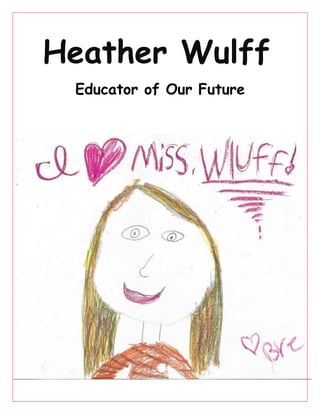This document provides the resume and teaching philosophy of Heather Wulff, an experienced educator. She has a Master's degree in teaching and multiple subject teaching credentials. Her experience includes teaching various grades from preschool to 4th grade in several schools. She is currently teaching PreK-3 and has a strong record of collaborating with other teachers and developing engaging, standards-aligned curricula. Her teaching philosophy emphasizes meeting the needs of diverse learners through hands-on and project-based lessons that incorporate multiple intelligences. She aims to create a positive learning community and sees the potential to influence students' lives.










































